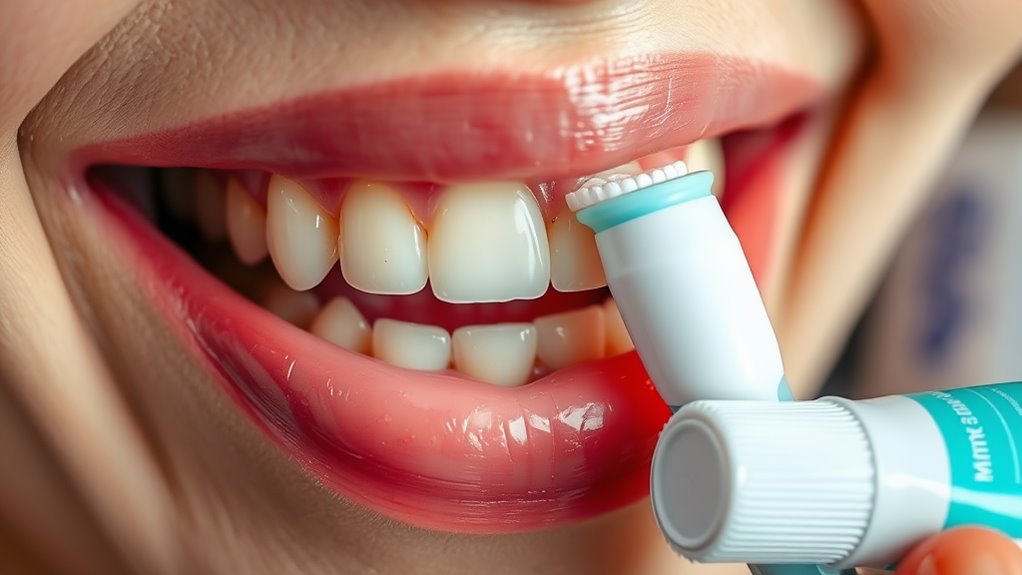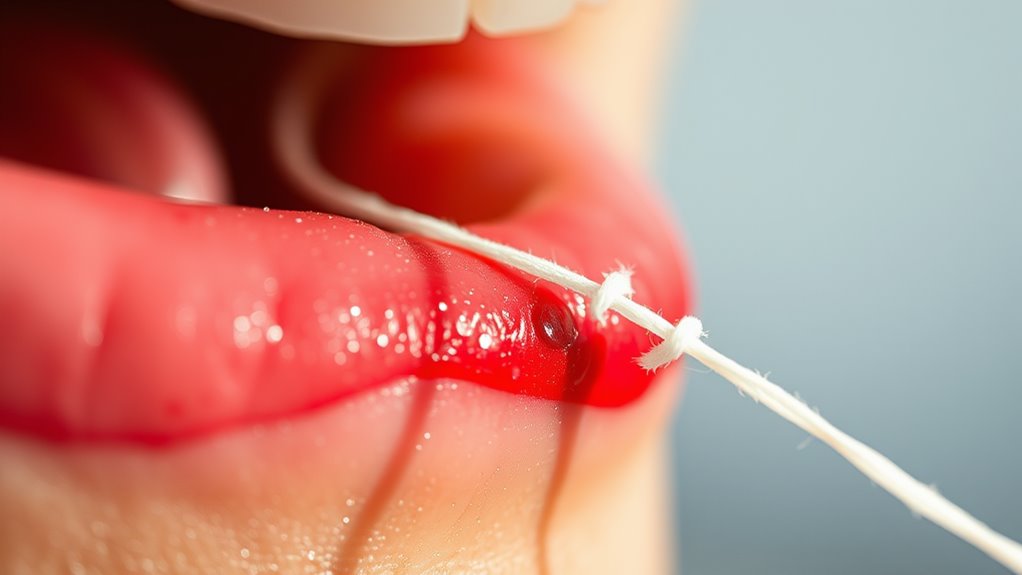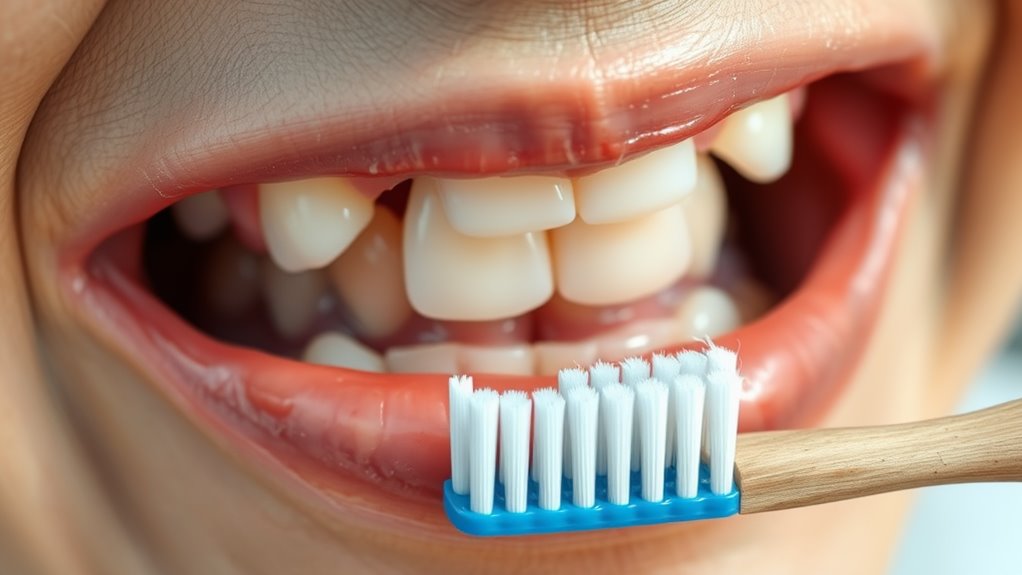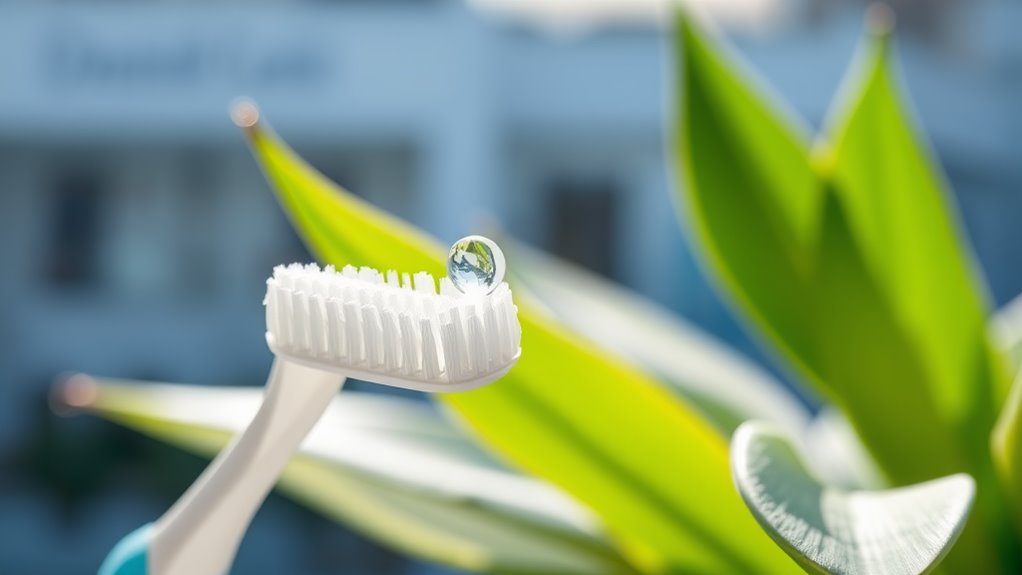The Hidden Reason Your Gums Are Receding (And How to Fix It!)
Your gums might be receding due to hidden factors like teeth grinding, hormonal changes, or ill-fitting dental appliances. These culprits exert pressure or irritate gum tissue, leading to recession. To fix it, maintain a proper oral hygiene routine, manage stress, and consult your dentist for personalized treatment options. Addressing these issues promptly can help preserve your oral health. There’s more to discover about protecting your gums and ensuring long-term wellness ahead.
Understanding Gum Recession: What You Need to Know
When you notice your gums receding, it can be alarming, especially since it often indicates underlying dental issues.
Gum recession occurs when the gum tissue pulls back from your teeth, exposing more of the tooth or its root. This can lead to sensitivity, increased risk of cavities, and even tooth loss if not addressed.
Several factors contribute to gum recession, including periodontal disease, improper brushing techniques, and genetic predisposition. You might also experience it if you have misaligned teeth or wear ill-fitting dentures.
Recognizing these causes is essential for your oral health. By understanding gum recession, you can take proactive steps to protect your smile, whether through improved hygiene or consulting your dentist for tailored treatment options.
The Role of Teeth Grinding in Gum Health
Although you mightn’t realize it, teeth grinding, or bruxism, can greatly impact your gum health.
When you grind your teeth, the excessive pressure can lead to inflammation and recession of your gums. This constant friction not only wears down your enamel but also disrupts the supportive structures around your teeth, making your gums more susceptible to damage.
You may notice increased sensitivity or discomfort as your gums recede. To protect your gum health, it’s essential to address the underlying causes of bruxism.
Stress management techniques, a mouth guard, or even consultation with a dental professional can help. By tackling teeth grinding, you’ll considerably improve your gum health and overall dental well-being.
Don’t ignore this hidden factor!
Identifying Other Hidden Causes of Receding Gums
Receding gums can stem from various hidden causes that mightn’t be immediately obvious. One common culprit is hormonal changes, especially during puberty, pregnancy, or menopause, which can affect gum health.
Certain medications, like antihypertensives and anticonvulsants, may also contribute to gum recession by altering your saliva production or gum tissue. Additionally, genetic predisposition plays a role; if your family has a history of gum issues, you might be at risk.
Poor-fitting dental appliances can irritate your gums, leading to recession over time. Finally, some autoimmune diseases can trigger inflammation that impacts gum tissue. Identifying these factors can help you take informed action to protect your smile.
Preventive Measures to Protect Your Gums
To maintain healthy gums, it’s vital to adopt preventive measures that keep potential issues at bay. Start with a consistent oral hygiene routine—brush twice a day and floss daily. Use a soft-bristled toothbrush to avoid damaging your gums.
Don’t forget to replace your toothbrush every three months or when the bristles fray. Regular dental check-ups are essential, as your dentist can spot early signs of gum disease.
Additionally, limit sugary snacks and beverages, as they can contribute to plaque buildup. Eating a balanced diet rich in vitamins, particularly vitamin C, can strengthen your gums.
Finally, avoid tobacco products, as they can greatly harm your gum health. By taking these steps, you’ll help protect your gums and maintain a beautiful smile.
Treatment Options for Receding Gums
When gum recession occurs, it’s important to explore effective treatment options to restore your oral health. You can start by consulting your dentist for a personalized plan. Non-invasive treatments like scaling and root planing can remove plaque buildup and smooth the tooth roots. If recession is severe, you might consider surgical options, such as gum grafting, which can help cover exposed roots.
| Treatment Option | Description |
|---|---|
| Scaling and Root Planing | Deep cleaning to remove plaque |
| Gum Grafting | Surgical procedure to cover roots |
| Pinhole Surgical Technique | Minimally invasive gum reposition |
| Antibiotics | Treat underlying infections |
Addressing gum recession now can prevent further damage and improve your smile’s appearance. Don’t wait—take action for healthier gums today!
Maintaining Long-Term Gum Health
After addressing gum recession with appropriate treatments, maintaining long-term gum health becomes essential for sustaining the results you’ve achieved.
Here are some key practices to keep your gums healthy:
-
Brush twice daily with a soft-bristled toothbrush to remove plaque without damaging your gums.
-
Floss daily to clean between teeth and prevent gum disease.
-
Use an antimicrobial mouthwash**** to reduce bacteria and promote gum health.
-
Schedule regular dental check-ups to catch any issues early and receive professional cleanings.
Frequently Asked Questions
Can Diet Affect Gum Recession?
Yes, your diet can affect gum recession. Consuming high-sugar or acidic foods can lead to plaque buildup and inflammation. Incorporating nutrient-rich foods helps maintain gum health and may reduce further recession. Pay attention to what you eat!
Is Gum Recession Reversible?
Gum recession isn’t fully reversible, but you can improve your gum health. With good oral hygiene, regular dental visits, and possibly grafting procedures, you can help your gums regain some strength and stability over time.
How Often Should I Visit the Dentist?
You should visit the dentist at least twice a year for regular check-ups and cleanings. If you have specific concerns or conditions, your dentist might recommend more frequent visits to guarantee your oral health stays ideal.
Are Natural Remedies Effective for Gum Health?
Natural remedies can help support gum health, but they shouldn’t replace professional dental care. Incorporate options like saltwater rinses or essential oils, and always consult your dentist for personalized advice to guarantee effective treatment.
What Role Does Stress Play in Gum Recession?
Stress can greatly impact your oral health. When you’re stressed, you might clench your jaw or grind your teeth, which can lead to gum recession. Managing stress is essential for maintaining healthy gums and overall well-being.




